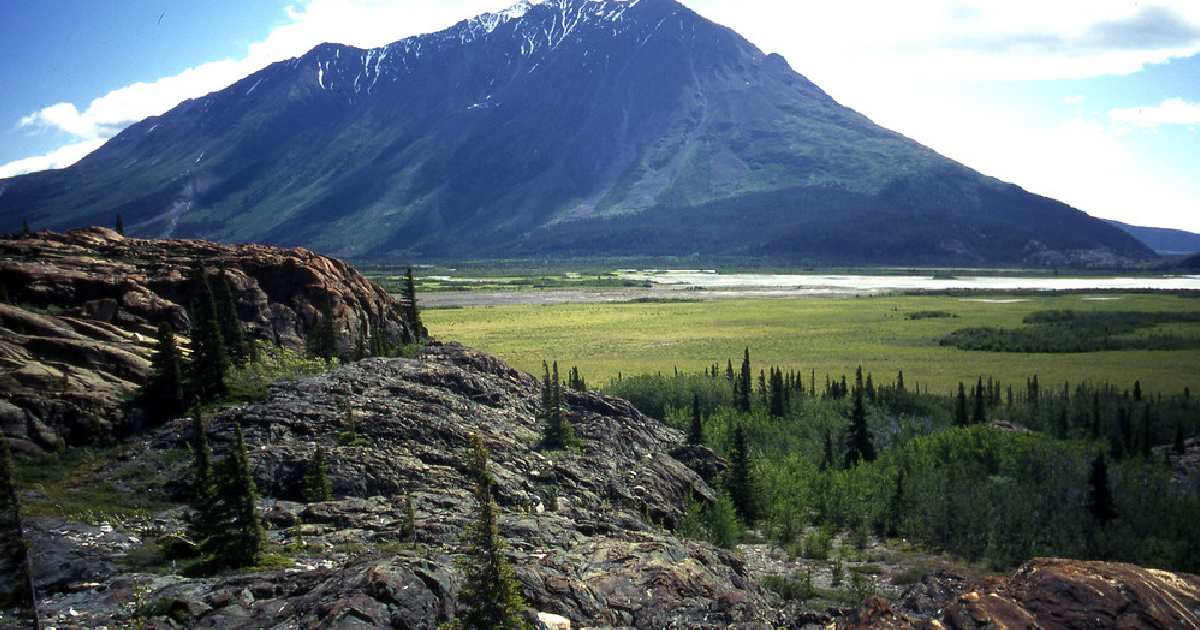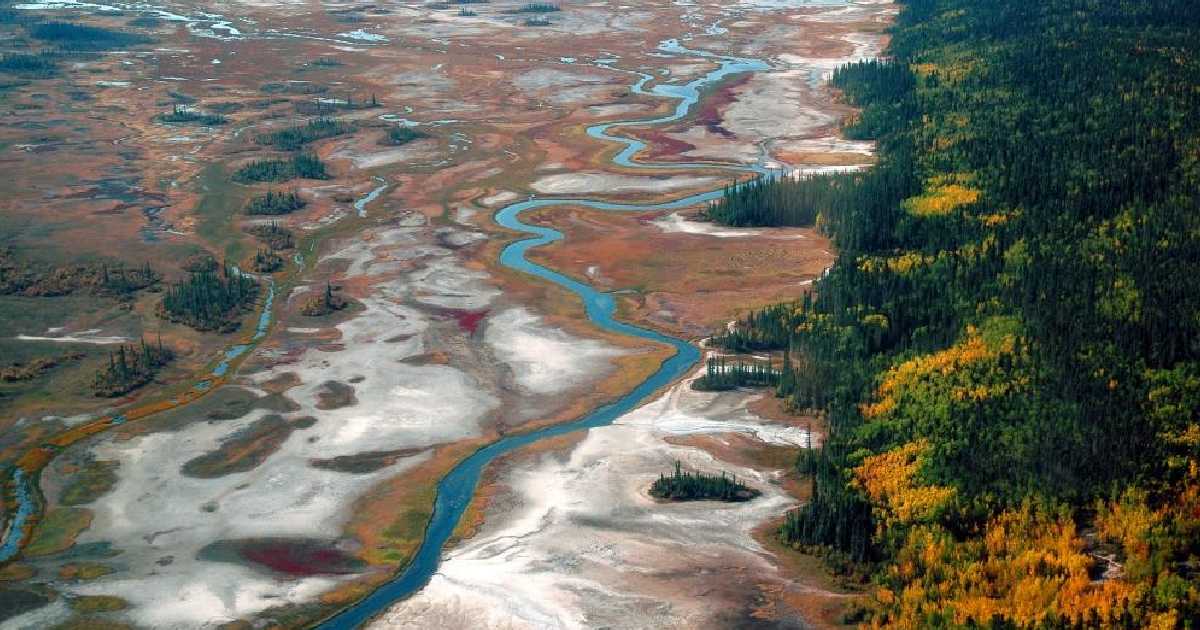National parks are Earth’s jewels, preserving vast landscapes, diverse ecosystems, and unique wildlife. From icy realms to scorching deserts, the world’s largest national parks cover an impressive array of natural wonders. This article will explore the ten largest national parks in the world, delving into their significant features, locations, and fascinating facts. We’ll journey from the Arctic tundra, the northernmost national park, to tropical coral reefs, highlighting the immense beauty and biodiversity these parks protect. Along the way, we’ll touch upon notable parks like Yellowstone National Park, Denali National Park, and others, offering a comprehensive view of these natural sanctuaries.
10. Kluane National Park and Reserve

- Area: 22,013 square kilometers
- Location: Yukon Territory, Canada
- Key Feature: Home to Mount Logan, Canada’s highest peak
Nestled in Canada’s Yukon territory, Kluane National Park and Reserve is a majestic landscape of towering peaks and expansive glaciers. Established in 1976 and expanded in 1993, it shares borders with parks in Alaska and British Columbia, forming a significant conservation area. The park boasts some of North America’s highest mountains, including Mount Logan, Mount St. Elias, and Mount Lucania, as well as the vast Kaskawulsh Glacier.
Visitors to Kluane can experience extreme weather conditions, with long, freezing winters and short, mild summers. Despite the harsh climate, the park supports a variety of wildlife, including wolves, grizzly bears, and Dall sheep. It’s a haven for adventure seekers and nature enthusiasts, offering a glimpse into the raw power and beauty of nature.
Kluane National Park and Reserve is not just about rugged landscapes; it also offers numerous recreational opportunities. Hiking, mountaineering, and river rafting are popular activities that allow visitors to immerse themselves in the stunning wilderness. Additionally, the park’s rich cultural history is reflected in the heritage of the Indigenous peoples who have lived in this region for thousands of years, adding depth to the visitor experience.
9. Great Barrier Reef Marine Park

- Area: 34,870 square kilometers
- Location: Off the coast of Australia
- Key Feature: The largest coral reef system in the world
The Great Barrier Reef Marine Park is a UNESCO World Heritage Site and the largest coral reef system globally, covering 344,400 square kilometers. This underwater wonderland, established in 1975, is home to an extraordinary diversity of marine life, including over 1,500 species of fish, 400 types of coral, and numerous sea turtles, sharks, and rays.
Beyond its biological significance, the park plays a crucial role in marine conservation and tourism, attracting millions of visitors annually. Its vibrant coral reefs, teeming with life, offer unparalleled opportunities for snorkeling and diving. However, the reef faces significant threats from climate change, pollution, and overfishing, making ongoing conservation efforts essential to preserve this natural treasure for future generations.
The Great Barrier Reef Marine Park is not only a marvel for marine enthusiasts but also a critical component of the global ecosystem. Its health impacts ocean currents, weather patterns, and even the air we breathe. Educational programs and sustainable tourism practices are being implemented to ensure that this magnificent park in the world continues to thrive, balancing human activity with environmental stewardship.
8. Papahānaumokuākea Marine National Park

- Area: 36,700 square kilometers
- Location: Northwestern Hawaiian Islands, USA
- Key Feature: Largest marine protected area in the world
Papahānaumokuākea Marine National Monument, designated in 2006 and expanded in 2016, is the largest marine protected area globally. Spanning 36,700 square kilometers in the Northwestern Hawaiian Islands, this park safeguards a rich marine ecosystem, including endangered species like the Hawaiian monk seal and green sea turtle.
Recognized as a UNESCO World Heritage Site, Papahānaumokuākea is a biodiversity hotspot with over 7,000 marine species, many of which are endemic. The monument’s isolation and pristine environment make it a critical refuge for marine life and a unique research area for scientists studying ocean conservation and climate change impacts.
The cultural significance of Papahānaumokuākea is also profound. It holds great importance for Native Hawaiian traditions and beliefs, intertwining natural beauty with cultural heritage. The park’s protected status helps preserve these cultural connections while ensuring the conservation of its extraordinary marine life, making it a place of both ecological and cultural importance.
7. Wood Buffalo National Park

- Area: 44,807 square kilometers
- Location: Northwest Territories and Alberta, Canada
- Key Feature: Largest remaining wild bison herd
Canada’s largest national park, Wood Buffalo National Park, was established in 1922 to protect the last remaining herds of wild bison. Covering 44,807 square kilometers, the park features diverse landscapes, including boreal forests, salt plains, and wetlands. It is also a UNESCO World Heritage Site, recognized for its cultural and natural significance.
Wood Buffalo is a wildlife haven home to over 200 bird species, 47 mammal species, and 18 fish species. The park also holds significant cultural value for the Dene and Métis Indigenous peoples, who have lived in the area for thousands of years. Visitors can witness the rich biodiversity and cultural heritage that make this park a national treasure.
The park’s vast boreal forests are a critical component of the global environment, acting as significant carbon sinks and supporting diverse ecosystems. Wood Buffalo National Park, the nation’s largest national park, is a testament to Canada’s commitment to preserving its natural heritage, offering a sanctuary for wildlife and a place for humans to reconnect with nature.
6. Central Kalahari Game Reserve

- Area: 52,800 square kilometers
- Location: Kalahari Desert, Botswana
- Key Feature: Home to the black-maned Kalahari lions
The Central Kalahari Game Reserve, established in 1961, is Botswana’s largest national park, spanning 52,800 square kilometers. This vast desert landscape is home to an array of wildlife, including the iconic black-maned Kalahari lions, wildebeest, and giraffes. The reserve was created to protect the traditional homeland of the San people, one of Africa’s oldest indigenous groups.
Conservation efforts in the park have faced challenges from mining and tourism projects, but the Botswana government expanded the reserve in 2008, emphasizing its importance for biodiversity. The Central Kalahari Game Reserve remains a critical sanctuary for wildlife and cultural heritage, offering a unique glimpse into one of Africa’s most ancient and resilient ecosystems.
Visitors to the reserve can embark on guided safaris to witness the incredible wildlife and learn about the San people’s rich cultural history. The park’s remote and rugged beauty provides a stark contrast to the bustling urban environments, allowing for a profound connection with the natural world and a deeper appreciation of conservation efforts.
5. Wrangell-St. Elias National Park

- Area: 37,000 square kilometers
- Location: Alaska, USA
- Key Feature: Home to Mount St. Elias, one of North America’s tallest peaks
Wrangell-St. Elias National Park, the largest national park in the United States, covers 37,000 square kilometers of diverse Alaskan wilderness. Established in 1978, the park encompasses a range of landscapes, from coastal regions to towering peaks, including Mount St. Elias. The park’s rugged terrain is home to a variety of wildlife, such as grizzly bears, wolves, and caribou.
The park’s coastal areas are vital habitats for marine mammals like seals, sea lions, and whales. Wrangell-St. Elias is also part of a UNESCO World Heritage Site, recognized for its exceptional natural beauty and geological significance. The park offers endless opportunities for outdoor adventure and exploration, drawing visitors from around the world.
Hiking, mountaineering, and glacier trekking are popular activities in Wrangell-St. Elias attracts adventurers seeking to experience the raw beauty of Alaska. The park’s remote and pristine environment offers a rare opportunity to explore one of the world’s last great wilderness areas, where nature reigns supreme and human impact is minimal.
4. Namib-Naukluft National Park

- Area: 49,768 square kilometers
- Location: Namib Desert, Namibia
- Key Feature: Tall red sand dunes at Sossusvlei
Namib-Naukluft National Park, established in 1907, is the fourth-largest national park in the world, covering 49,768 square kilometers. Located in the Namib Desert, this park is known for its stunning red sand dunes, some of the tallest in the world. The park’s diverse landscapes include salt flats, rugged mountains, deep canyons, and expansive grasslands.
The park is home to various wildlife, including gemsbok, springbok, and desert-adapted elephants. Sossusvlei, with its towering dunes, is a highlight for visitors, offering breathtaking views and unique photographic opportunities. Namib-Naukluft National Park is a testament to nature’s resilience and beauty in one of the world’s oldest deserts.
Visitors can explore the park’s unique geological formations, hike through canyons, and witness the dramatic contrasts of light and shadow on the sand dunes. The park’s remote and otherworldly landscapes provide a surreal experience, capturing the imagination and inspiring a deep appreciation for the natural world.
3. Quttinirpaaq National Park

- Area: 37,775 square kilometers
- Location: Ellesmere Island, Canada
- Key Feature: Arctic landscapes with glaciers and polar deserts
Quttinirpaaq National Park, located on Ellesmere Island in Canada’s Arctic Archipelago, covers 37,775 square kilometers of stark, remote beauty. Established to protect the Arctic’s unique landscapes, the park features glaciers, mountains, and polar deserts. It is one of the northernmost national parks in the world, offering a rare glimpse into the harsh yet stunning Arctic environment.
The park is home to a variety of wildlife, including muskoxen, arctic wolves, and polar bears. Visitors can experience the midnight sun and explore vast, untouched wilderness areas. Quttinirpaaq’s remote location and extreme conditions make it a truly unique destination for adventurous travelers and nature enthusiasts.
Quttinirpaaq National Park’s extreme isolation ensures its pristine condition, allowing researchers to study the impacts of climate change on Arctic ecosystems. The park’s icy landscapes and unique wildlife provide invaluable insights into the natural world’s resilience and adaptability in one of the harshest environments on Earth.
2. Kavir National Park

- Area: 89,286 square kilometers
- Location: Central desert regions of Iran
- Key Feature: Vast salt flats and rare wildlife
Kavir National Park, established in 1982, is Iran’s largest national park, covering 89,286 square kilometers. Known for its vast salt flats, sand dunes, and rugged mountains, the park is a UNESCO biosphere reserve. It is home to rare species such as the Asiatic cheetah, Asiatic black bear, and Goitered gazelle.
The park’s diverse landscapes support over 600 plant species and numerous animal species, including Persian leopards and wild goats. Kavir National Park’s remote and harsh environment offers a unique opportunity to explore one of the world’s most intriguing desert ecosystems and observe its remarkable wildlife.
The park’s stunning salt flats create a surreal, otherworldly landscape that captivates photographers and nature lovers alike. Kavir National Park’s conservation efforts are crucial in protecting its unique flora and fauna, ensuring that future generations can experience the park’s extraordinary beauty and biodiversity.
1. Northeast Greenland National Park

- Area: 972,000 square kilometers
- Location: Northeast Greenland
- Key Feature: Largest national park in the world, UNESCO biosphere reserve
Northeast Greenland National Park, the largest national park in the world, covers an astounding 972,000 square kilometers. Established in 1974 and designated a UNESCO biosphere reserve, this park is a vast, remote wilderness. It encompasses ice sheets, mountains, fjords, and rivers, with the Greenland ice sheet covering about 85% of the area.
The park’s extreme Arctic conditions create a dynamic landscape, constantly reshaped by glaciers and ice movement. Despite the harsh environment, this biggest national park is home to a variety of wildlife, including polar bears, muskoxen, and arctic foxes. Northeast Greenland National Park offers unparalleled opportunities for scientific research and exploration in one of the world’s most pristine and unspoiled environments.
The park’s remoteness and vastness provide a unique opportunity for adventure and solitude than all the national parks, drawing explorers and scientists eager to uncover the secrets of the Arctic. Northeast Greenland National Park stands as a testament to the power and beauty of nature, reminding us of the importance of preserving our planet’s wild places.
Conclusion
The world’s largest national parks are not just vast areas of protected land; they are vital sanctuaries for wildlife, cultural heritage, and natural wonders. From the icy expanses of Northeast Greenland to the coral reefs of the Great Barrier Reef, these parks represent the pinnacle of nature’s beauty and diversity. Preserving these incredible landscapes ensures that future generations can continue to marvel at and learn from the Earth’s most magnificent natural treasures.
Each park offers a unique experience, from the boreal forests of Wood Buffalo National Park to the deserts of Kavir National Park. Whether you’re exploring the savannas of Kruger National Park or the plains of Serengeti National Park, the world’s largest national parks provide endless opportunities for adventure, discovery, and connection with the natural world. As we continue to face environmental challenges, the importance of protecting these natural sanctuaries has never been greater.
Frequently Asked Questions (FAQs)
What is the largest national park in the world?
Northeast Greenland National Park is the largest national park in the world, covering 972,000 square kilometers. Established in 1974 and recognized as a UNESCO biosphere reserve, this vast Arctic wilderness includes ice sheets, mountains, fjords, and rivers. It is home to diverse wildlife, including polar bears, muskoxen, and arctic foxes, offering unparalleled opportunities for scientific research and exploration.
What are the largest national parks by square miles?
The largest national parks by square miles are:
- 1. Northeast Greenland National Park, covering 375,000 square miles.
- 2. Kavir National Park in Iran, spanning 34,485 square miles.
- 3. Quttinirpaaq National Park in Canada, covering 14,585 square miles.
- 4. Namib-Naukluft National Park in Namibia, with 19,216 square miles.
- 5. Wrangell-St. Elias National Park in the USA, spanning 13,175 square miles.
What are the big three national parks?
The Big Three national parks typically refer to Yellowstone, Yosemite, and Grand Canyon National Parks. Yellowstone, the first national park in the world, spans parts of Wyoming, Montana, and Idaho. Yosemite, in California, is renowned for its granite cliffs and waterfalls. The Grand Canyon, located in Arizona, is famous for its immense and visually overwhelming canyon carved by the Colorado River.
Where are the Big 5 national parks?
Utah is home to five of the best national parks, collectively known as the Mighty Five. These parks are Arches, Bryce Canyon, Canyonlands, Capitol Reef, and Zion. Each park offers unique landscapes, from the striking rock formations of Arches and Bryce Canyon to the vast, rugged terrain of Canyonlands and the diverse scenery of Capitol Reef and Zion. These parks are must-visit destinations for outdoor enthusiasts.
What is the most heavily visited national park?
The Great Smoky Mountains National Park is the most heavily visited national park in the United States. Located on the border between North Carolina and Tennessee, it attracts over 12 million visitors annually. The park is renowned for its biodiversity, beautiful scenery, and well-preserved historical buildings. Its popularity is also due to its accessibility, with numerous entry points and extensive hiking trails.

